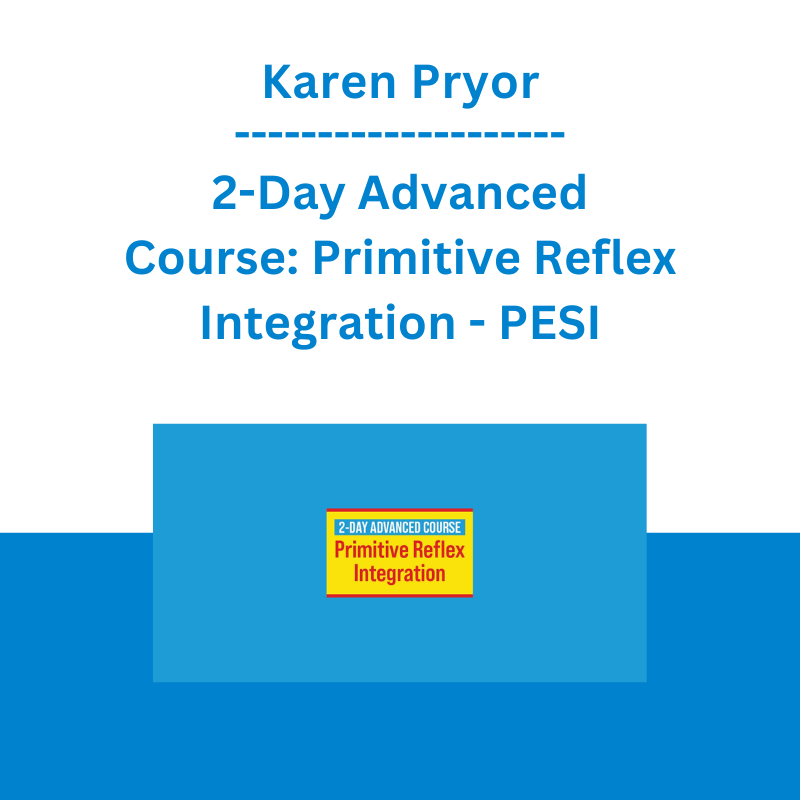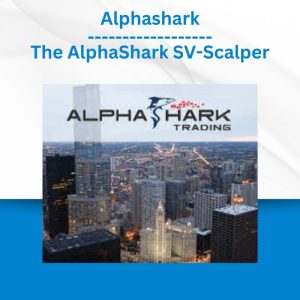*** Proof of Product ***
Exploring the Essential Features of “Karen Pryor – 2-Day Advanced Course: Primitive Reflex Integration – PESI”
Speaker: Karen Pryor, PhD, PT, DPT, CH, CFPS
Format: Audio and Video
Media Type: Digital Seminar
Description
As therapists, when we treat the causes and symptoms of motor delays, we can utilize alternate brain pathways to improve the effects of therapy.
Through neuroplasticity, we have the power to make this happen! It acts as an adaptive mechanism to compensate for lost connection allowing us to maximize remaining function!
From congenital abnormalities (Downs Syndrome, Cerebral Palsy, Angelman Syndrome, Prader-Willi syndrome and more….) to traumatic brain injuries, this course delivers new and exciting ideas on how to detour around damage and incorporate viable nervous system connections.
Dr. Karen Pryor, PT, DPT, will teach you:
- How therapy can change the brain and how neuroplasticity will improve motor skills in a child’s development
- Creative and evidenced-based approaches to incorporate into a multisensory learning experience
- The importance of diverse and novel activities during treatment sessions
- The link between primitive reflexes and development
- How to evaluate the influence of primitive reflexes and effects on the
- CNS developmental stages relating to motor function
Video case studies will demonstrate changes before and after integrative neuroplasticity treatments. The therapy techniques you learn in this course can easily be integrated into the clinic or home the next day, leading to increased developmental success.
Speaker
Karen Pryor, PhD, PT, DPT, CH, CFPS
Health Sphere Wellness Center
Karen Pryor, PhD, PT, DPT, CH, CFPS, has a doctorate in physical therapy and has practiced for 40 years in the field. Dr. Pryor is the owner of Health Sphere Wellness Center, an integrative therapy clinic in Nashville, Tennessee. Involved with early intervention in the birth-three population for over 30 years, she has developed neuroplasticity techniques that are used in a wide variety of settings, including homes, childcare centers, and school systems, to advanced pediatric therapy programs. Dr. Pryor serves on several boards, including the Leadership Interagency Council for Early Intervention (2014-2019), a position to which she was appointed by Tennessee Governor Bill Haslam. In 2010, she received the President’s Volunteer Service Award for her contributions to the advanced treatment of children from President Barack Obama. In addition to her work with children, Dr. Pryor has served as an adjunct professor at the Tennessee State University Occupational Therapy Assistant program. She is a clinical instructor for several universities and colleges. With her years of experience and passion for complete wellness, Dr. Pryor advances a more expansive view of how to integrate therapy throughout the lifespan by using neuroplasticity techniques.
Speaker Disclosures:
Financial: Karen Pryor is the owner of Health Sphere Wellness Center, LLC and is a field examiner for PDMS-3. She has employment relationships with Tennessee State University, University of Tennessee at Chattanooga Physical Therapy School, Daymar Physical Therapy Assistant School and Volunteer State Community College. Karen Pryor receives a speaking honorarium and recording royalties from PESI, Inc. She has no relevant financial relationships with ineligible organizations.
Non-financial: Karen Pryor is a reviewer with Tennessee Physical Therapy Association and American Physical Therapy Association. She is an Ambassador for National Down Syndrome Society.
Objectives
- Describe the primitive reflexes’ influence on movement patterns.
- Identify the multilayer approach using neuroanatomy and brain function.
- Evaluate strategies to incorporate techniques into home programs for parents and caregivers.
- Recognize the importance of positive treatment sessions and verbal cues.
- Analyze the relationship between brain dysfunction and tone abnormalities.
- Restate different approaches to changing low and high tone qualities.
- Identify primitive reflexes and how they contribute to development.
- Articulate testing and influences of the retention or primitive reflexes.
- Demonstrate the integration exercise, including modifications, for each reflex.
- Identify the behavioral and physical systems associated with each reflex.
- Examine why the reflexes may still be present.
Discuss what reflex integration can accomplish.
Outline
- NEUROANATOMY & BRAIN DEVELOPMENT
Brain stem and functions
Occipital lobe
Temporal lobe
Frontal lobe
Parietal lobe - BRAIN DAMAGE & MISSING PARTS
Neurodevelopmental screens
Examples of damage
What is working and what is not
Where to rewire
Therapy as infants – faster change
Going deep into the brain, beyond the level of damage - BIGGEST CHALLENGES IN DEVELOPMENTAL DELAYS
High tone
Low tone
Nystagmus
Tremors - HOW TO APPROACH TREATMENTS
Developmental milestone review
Sensory motor development
Vision
Vision and hearing
Speech
Sensation
Primitive reflex patterns and influence
Opening the hands for exploration
Developmental delay and when to go back a step in therapy treatments - A NEW PERSPECTIVE ON THE NERVOUS SYSTEM & GUIDING IT FOR POSITIVE CHANGE
Lobes next door
Videos of before and after sensory stimulation combinations
Why vision is vitally important and how it can be stimulated
How these concepts can be explained to parents and caregivers
The brain is clay and how to make a model - THE PRIMARY & SECONDARY RESULTS OF NEUROPLASTICITY TECHNIQUES
Changing the way the brain connects
Primitive reflex integration and increased active movements
The “Team” – patient, therapist, and parent/caregiver
Sensory stimulation to promote appropriate motor response
Smooth movements
Strength is not the same as tone
Simple activities to present to parents - HOW TO INTEGRATE NEUROPLASTICITY INTO YOUR THERAPY PROGRAM
Sensation is 3-dimensional
Climb through the cloth tube
Vision exercises
Sensory stimulation for high tone vs. low tone - BRAIN DEVELOPMENT AND IMPAIRMENTS RELATED TO:
Brain stem
Mid brain
Cerebellum
Cortex –
Occipital lobe
Temporal lobe
Parietal lobe
Frontal lobe - EVALUATION AND ASSESSMENT
Demonstration of primitive reflexes
How retained reflexes act on developmental milestones
Reasons for primitive reflex retention or re-emergence
How primitive reflexes interfere with higher level skills – Reading, writing, sensory processing
DETAILPalmar grasp
Plantar grasp
Symmetrical Tonic Neck
Asymmetrical Tonic Neck
Tonic Labyrinthine Reflex
Moro Reflex
Extension synergy
Flexion synergy
Target Audience
- Physical Therapists
Occupational Therapists
Speech-Language Pathologists
Physical Therapist Assistants
Occupational Therapy Assistants
Educators
Early Interventionists
Reviews
Kayla W
“For beginning pediatric physical therapists (I am 4 years out but just within last year developed about a 50% pediatric case load), it may be helpful to have shared your experience with integrating primitive reflexes when you first started out with this treatment approach. I love all that was taught and am excited for growth but it is overwhelming to think about what all has been missing in treatment and how to change the whole approach of therapy. So sharing a personal story may decrease f.orf.”
Please see the full list of alternative group-buy courses available here: https://lunacourse.com/shop/










 Google Business Model - Daniel Pereira - The Business Model Analyst
Google Business Model - Daniel Pereira - The Business Model Analyst